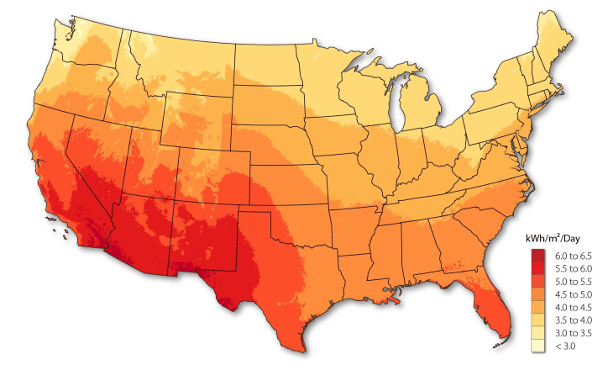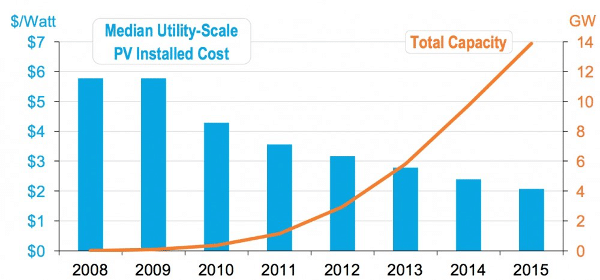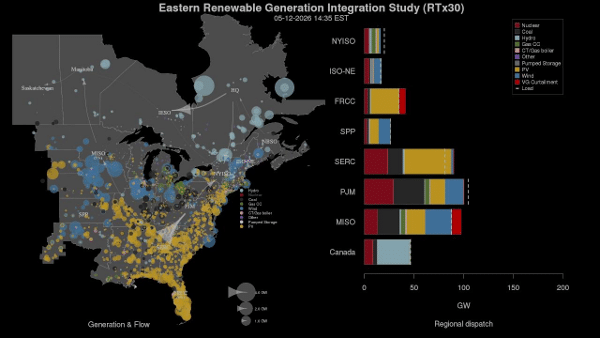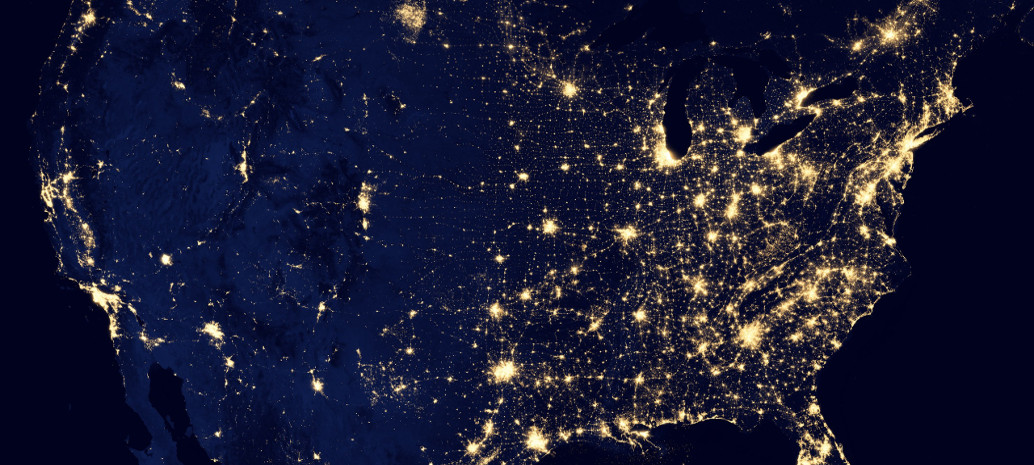Both naysayers in the utility industry and boosters for the fossil fuel and nuclear industries have long expressed skepticism as to whether or not the electricity grid in the United States can handle large amounts of renewable energy.
And while the International Energy Agency (IEA) has shown that most power systems can reach 45% wind and solar at little additional cost if the right approaches are taken, nation-level studies are always useful as each nation and each grid is different.
As the latest verification that we can reach much higher levels of renewable energy in the United States, Aaron Bloom of National Renewable Energy Lab (NREL) has issued an analysis for America’s Power Plan which states that reaching 30% wind and solar on U.S. power grids is “no big deal”.
For reference, in 2015 the United States only got 6% of its power from wind and solar – although the Western United States was at a higher level with 8% wind and solar and Texas met 11% of 2015 demand with wind alone.
Bloom cites four factors for his conclusion that much higher levels are not a daunting technical challenge, namely resource availability, falling costs, research results and the experience from actual grids in Europe.
For the first, resource availability, Bloom notes that you could meet the current 4,000 terra-watt hours of annual electricity demand in the United States with solar on only 0.6% of U.S. land, and meet 35% of electricity demand with wind turbines on 1.5% of U.S. land. So not much of a challenge here.

As far as the cost of all this goes, Bloom notes that the prices of wind and solar just keep falling, with utilities purchasing wind power for as low as $20 per megawatt-hour in the Plains States. As for solar costs, pv magazine has been reporting for years on the steadily falling costs and prices for solar, which have reached contracted prices of under $40 per megawatt-hour for utility-scale projects. It should also be noted that NREL has reported that costs have fallen again in Q1 2016 to under $1.50 per watt for utility-scale solar. So there is also not much of a challenge in terms of cost.

Bloom’s third point is that research has shown in theory that U.S. grids can integrate high levels of renewable energy. This is an area that Bloom is particularly knowledgeable, as he is a co-author of Eastern Renewable Generation Integration Study (ERGIS), part of a groundbreaking series of reports published by NREL on the integration of high levels of renewable energy in both the Eastern and Western U.S. grids.
ERGIS found that the Eastern United States can accommodate “upwards” of 30% wind and solar, with an expanded transmission build-out and some operational and regulatory changes. Bloom elaborated for America’s Power Plan, noting that power systems with a lot of wind and solar are able to operate reliably and withstand moment-to-moment fluctuations in the energy balance, extreme weather and sudden system disruptions, particularly if changes to the operations of utility systems are made.

This is an area where the Western United States is making progress. Five utilities and grid operators have already joined the Energy Imbalance Market, a real-time wholesale power market managed by California’s grid operator which allows electricity trading in intervals as small as five minutes.
Bloom additionally notes that wind and solar plants that utilize inverter and information technologies can supply essential reliability services which have been traditionally supplied by conventional generation, enough to handle instantaneous penetrations of 60% on the Western Interconnection. (Editor’s note: pv magazine provided in-depth coverage of solar’s ability to supply grid services in our July print edition)
“The research appears conclusive: Wind and solar could replace carbon-intensive baseload as the dominant sources of electricity generation in the U.S. without affecting reliability,” notes Bloom. “But it’s not only researchers saying this, the world’s largest system operators agree that, technically, the system can maintain reliability while keeping costs affordable.”
Bloom’s final point is that other nations and grids have proven this with real-world experience, citing moments when wind has met more than 100% of Denmark’s electricity demand and wind and solar have supplied nearly 100% of German demand. At the same time, the Danish and German grids are the most reliable in Europe and perhaps the world as measured by frequency and duration of power outages.
But while the Danish and German grids are connected to the much larger continental European grid, Bloom says a stronger example is relatively isolated Ireland, which met 39% of its power needs in December 2015 with wind.
Bloom also notes that Colorado, California, Texas and the Southwest Power Pool have all reached instantaneous penetrations of nearly 50% wind and solar. And here is where Bloom notes that the United States has a major advantage, in that it is much easier to integrate high levels of wind and solar on the larger, mostly interconnected grids in the United States.
“Reaching and operating a system with 30 percent wind and solar isn’t the problem,” notes Bloom. “We can do that.”
“But we’re going to need to set our sights much higher if we want to halt the progression of climate change. For that, we need to deeply decarbonize the energy sector, which will require continued research and development support.”
Bloom notes that he is now working on a new integration study announced this summer by the governments of the United States, Mexico and Canada.
This content is protected by copyright and may not be reused. If you want to cooperate with us and would like to reuse some of our content, please contact: editors@pv-magazine.com.









By submitting this form you agree to pv magazine using your data for the purposes of publishing your comment.
Your personal data will only be disclosed or otherwise transmitted to third parties for the purposes of spam filtering or if this is necessary for technical maintenance of the website. Any other transfer to third parties will not take place unless this is justified on the basis of applicable data protection regulations or if pv magazine is legally obliged to do so.
You may revoke this consent at any time with effect for the future, in which case your personal data will be deleted immediately. Otherwise, your data will be deleted if pv magazine has processed your request or the purpose of data storage is fulfilled.
Further information on data privacy can be found in our Data Protection Policy.